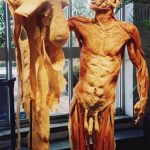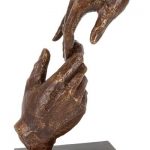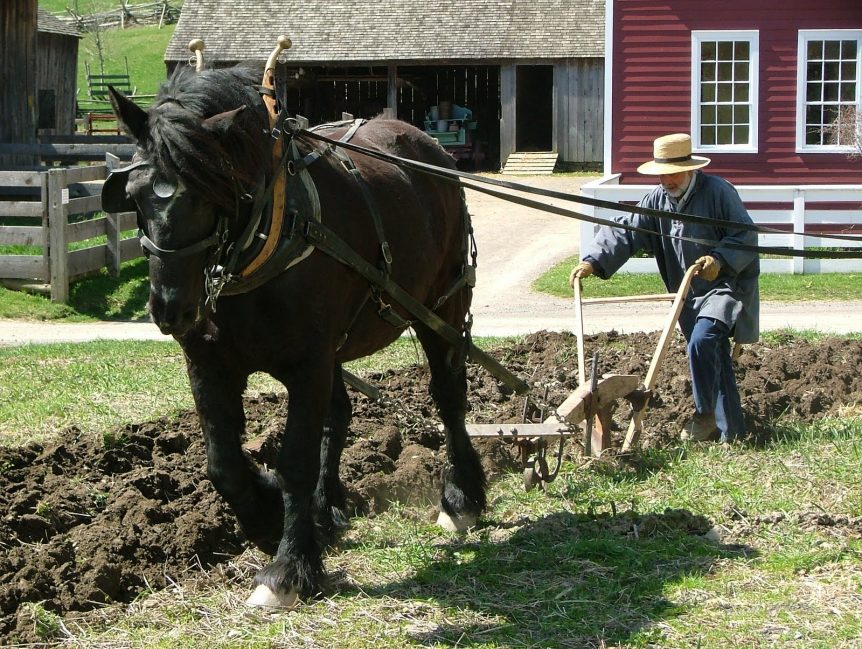Trauma Treatment Tip
While choosing the wrong points is never a good thing in anyone’s treatment — it is also not enough to simply choose the right points when working with survivors of trauma. We need to prepare our patient to receive our needles. We need to create a receptive field.
Some patients won’t tolerate needles. Their system is in a state of high arousal. If their tissues are braced and tight Qi simply cannot flow through them. We also risk stimulating greater dysregulation and more chaos when we needle into states of locked down, braced, hyper-aroused tissues. We also risk losing the trust of our patients because our needles will be very painful.
The tissues of patients whose body-mind chose a dissociated, hypo-aroused, collapsed state to cope with life-threat will lack the tone necessary to carry the Qi our needles are hoping to stimulate. Needling will have little or no impact when placed into collapsed tissue. Pulses won’t change, you will not be able to get the de qi sensation, because there is so little tone available to carry the Qi.
Non-needling techniques, using the 5 Element correspondences as a guide, can help restore tone in collapsed tissue, or soften tone in braced tissue. Our treatments will be more effective when we prepare our patient to receive our needles. All farmers plow their fields before planting their seeds.
 Bringing conscious touch to the skin is one such non-needling technique. The skin is Metal’s “tissue”. Its job is to pick up the sensations of the Po or Animal Soul. It is our largest organ, our fundamental armor and contains our whole body. It is a highly intelligent boundary system with richly sensate knowledge about the nature, location, quality and kind of touch it wants. It is able to make the distinction between “me” and “not me” and wisely discriminates between excitement and activation. It will know the moment that, for example, a tickle becomes abusive. Skin communicates sensations from the outside world to our inside world. We penetrate it every time we needle. Never be unconscious about the skin’s experience of your touch or your needle.
Bringing conscious touch to the skin is one such non-needling technique. The skin is Metal’s “tissue”. Its job is to pick up the sensations of the Po or Animal Soul. It is our largest organ, our fundamental armor and contains our whole body. It is a highly intelligent boundary system with richly sensate knowledge about the nature, location, quality and kind of touch it wants. It is able to make the distinction between “me” and “not me” and wisely discriminates between excitement and activation. It will know the moment that, for example, a tickle becomes abusive. Skin communicates sensations from the outside world to our inside world. We penetrate it every time we needle. Never be unconscious about the skin’s experience of your touch or your needle.
Each module of my Tao of Trauma series teaches touch skills designed to help prepare the field for acupuncture treatment. We use the correspondences of the Five Elements and the phase of the Self Protective Response to guide the choice of tissue, organ, or substance we explore in each module.
Participants in the Signaling Threat workshop coming up on December 2 & 3 will learn interaction, observation and touch skills related to the Water Element. Helping our patients to build capacity to recognize and respond to both safety and threat in the kidney/adrenal system is the foundation of all work with trauma survivors. It makes this workshop likely the most critical one in the year-long Tao of Trauma series.
You will return to your treatment rooms with skills designed to help your patients restore a sense of an embodied safe container when boundaries have been ruptured; bring regulation to the threat response communicated by both the kidney/adrenal system and the brain stem; and perhaps most importantly, ways to protect Jing in trauma survivors.
Alaine’s Two Cents
 I salute the policy makers, philanthropists, educators and medical personnel who are learning about the impact Adverse Childhood Experiences can have on our most vulnerable citizens — children, and especially children of color. There is so much hope in the growing body of knowledge about how to access the dysregulation held in body-memory, restore balance and heal.
I salute the policy makers, philanthropists, educators and medical personnel who are learning about the impact Adverse Childhood Experiences can have on our most vulnerable citizens — children, and especially children of color. There is so much hope in the growing body of knowledge about how to access the dysregulation held in body-memory, restore balance and heal.
This article from the Washington Post shares the important truth that “the brain is plastic, and certain interventions can buffer stress and help reverse the deleterious affects of heavy doses of stress in childhood”. These “certain interventions” certainly include trauma-informed acupuncture! We have so much to offer.
Check This Out!
 Dr. Abraham Vergese is on the faculty of Stanford Medical School. He eloquently calls for a return to “the power of the human hand to touch, to comfort, to diagnose and to bring about treatment” in this Ted Talk. He affirms what we know, patients are much more than the data points they too often represent in modern, high-tech medicine.
Dr. Abraham Vergese is on the faculty of Stanford Medical School. He eloquently calls for a return to “the power of the human hand to touch, to comfort, to diagnose and to bring about treatment” in this Ted Talk. He affirms what we know, patients are much more than the data points they too often represent in modern, high-tech medicine.
Clinical Curiosity
 Q. I have a client who I hold as a metal CF. I’ve used some of the Tao of Trauma techniques with her — but often times they are too much (e.g. she can only take the Kidney/Adrenal hold for a small period of time). I’m wondering if you have any insights into approaching this client?
Q. I have a client who I hold as a metal CF. I’ve used some of the Tao of Trauma techniques with her — but often times they are too much (e.g. she can only take the Kidney/Adrenal hold for a small period of time). I’m wondering if you have any insights into approaching this client?
A. Great question for pondering! The Kidney/Adrenal hold is a powerful resource for working with trauma survivors. You are wise to bring it to your patient.
I have two lines of thought. First off, the kidney is the root of all yin and all yang. It is the signaling center for threat. If we experience life threat after life threat, we can become habituated to its signal. We will not be able to easily distinguish between safety and threat. This means that just about all of our patients will benefit from the Kidney/Adrenal hold! There are actually dozens of ways to offer it!
Use your 5 Element touch skills as you approach their low-back with your hand. In this woman’s case, as a metal CF, hold her Kidney/Adrenal system as if it were the most delicate fine crystal. Meet it with elegance, respect and spaciousness. She likely would not feel met by the solid, anchoring hold that a Water CF would long for, or the slight lift, supportive and nurturing touch that an Earth CF would feel cared by. We want to create a sense of resonance between our hand and our patient’s energetic home.
My second thought is regarding the concept of titration. We want to offer the right “dosage” of treatment, and not overwhelm our patients with more than they can welcome and assimilate. If we overwhelm their capacity, our good intentions turn into their opposite. It seems ironic that the person who is the most dysregulated can actually assimilate or tolerate the least amount of intervention. The art of your work is in finding the sweet spot where you are intervening enough to make a difference, but not too much to overwhelm. Watching your patient and noticing the quality of their coherence is key. Look for their breath to become more regular and deep, their cardiac pulse to become more rhythmic and their Qi to fill in their tissues. If they are moving in the opposite direction, you have over-treated them and you need to back off.

